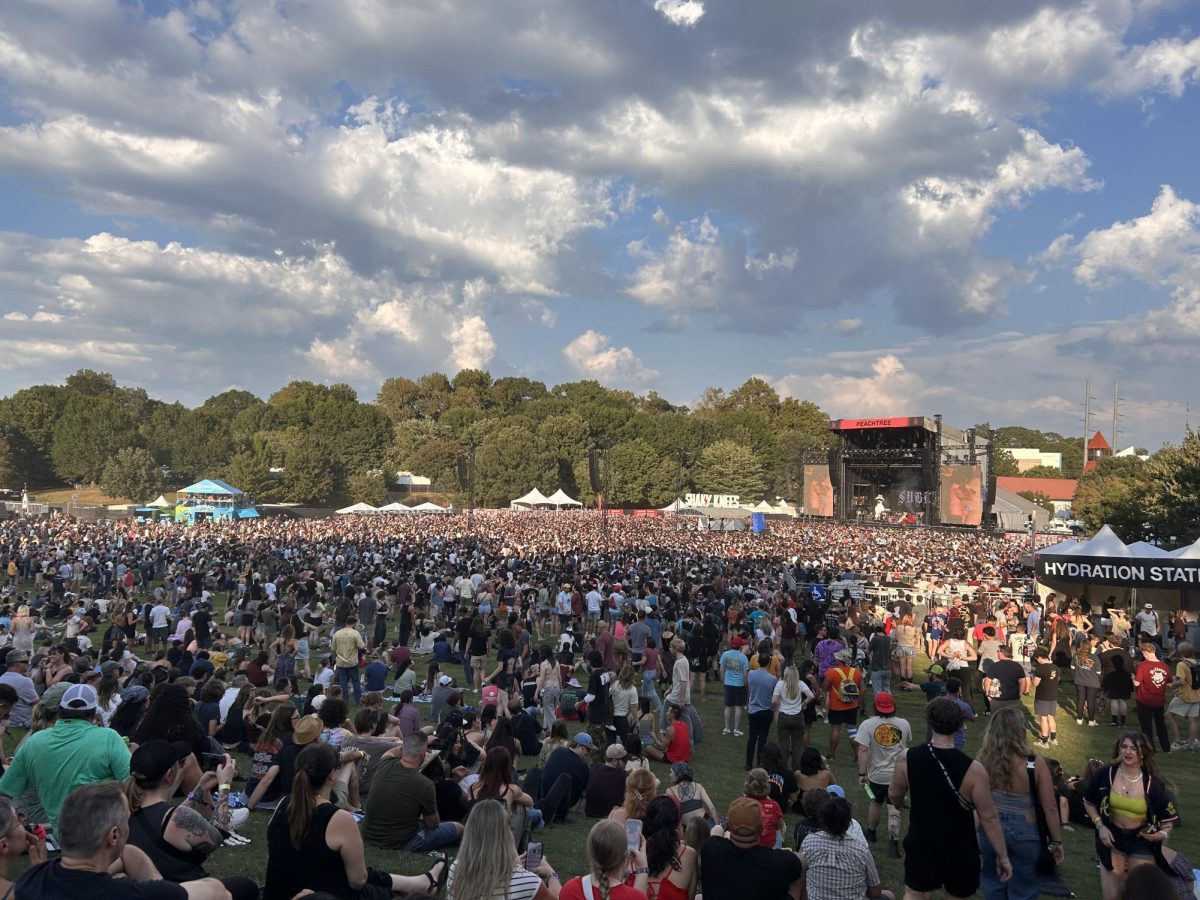Never Have I Ever: The Representation We Were Waiting For
October 7, 2020
When word came out about Mindy Kaling’s new Netflix show centered around a first-generation Indian-American teenager and her life experiences, I knew I had to watch it. It’s not every day that I get to watch a show with a character that I can actually relate to and this was an opportunity that I couldn’t miss.
Thick accents, limited athletic abilities, and overbearing intelligence seem to be the only Indian-American characteristics deemed worthy of showing on television and frankly it’s a bit demeaning. From the trailers, Never Have I Ever seemed like a show that would break these stereotypes and put out a more realistic portrayal of Indian-American families living in the United States. And I can definitely say it did just that, just not in the way I thought it would.
The show revolves around 15-year-old Devi Vishwakumar (played by Maitreyi Ramakrishnan) who lives in Los Angeles with her mother, Nandini, and her cousin Kamala. Devi is starting out her sophomore year of high school after dealing with the sudden death of her father at Devi’s orchestra concert and the tragedy that follows: Devi becomes paralyzed from shock.
Thankfully, she miraculously recovers and is able to start school like a normal teenager, except for the fact that she’s far from normal. Devi and her two best friends, Fabiola and Eleanor, navigate their way through high school as the school’s biggest “dorks” while dealing with Devi’s archnemesis Ben Gross, her crush Paxton Hall-Yoshida, and just the stress that comes with high school. Overall, it’s your typical coming-of-age teen story but with more culture and chaos.
So why was there so much buzz behind Never Have I Ever if it’s just like all the other Netflix shows about teenagers growing up? One word: representation. The show boasts a diverse star cast and shows several aspects of Indian culture that are often not shown in Western media. The fact that there’s such little representation of people that are of Indian origin in movies and television ends up benefitting Kaling, one of the creators of the show, making it very popular with young audiences.
Personally, I appreciate the effort Kaling put in to increase representation and really move past the stereotypes that have been associated with Indian-American people for so long. Although Devi is smart and dreams of an ivy league future, she wants to be popular and gets herself into trouble just like any teenager would. Instead of playing a typical “Asian” instrument like the violin, she plays the harp. She lives in a household of strong women who make their own decisions, contrary to how Indian women are usually depicted.
The show also has several moments that I, an Indian-American teen, can really relate to. I completely understand how overprotective parents, judgy aunties, and gorgeous future-doctor cousins make Devi’s life harder than it’s supposed to be and I smile when a guy confuses her religion for another one. I’m finally able to watch a show about someone who’s Indian without cringing and reaching for the remote to turn it off.
However, the best part of the show is undoubtedly Devi herself. She’s moody, a little self-centered, very irrational at times, and quite energetic. She ditches her best friends for a guy and shouts at her mom. She makes tik toks and attends after-curfew parties. She’s a regular 15-year-old girl. I’ve heard many people say that Devi’s personality is dreadful and unappealing—and I agree. I would never befriend Devi if she existed in real life, but it’s not about that. Devi represents everything Indian women are not supposed to be: disobedient, rude, inconsiderate, stubborn, opinionated. A “good Indian girl” listens to her parents, does her homework, and speaks when she’s asked to speak. She wouldn’t dare sneak out of the house or do anything irresponsible to upset her parents. So as a living example of a “good Indian girl,” I admire Devi’s loud personality and reckless behavior. It’s a new way of thinking about how Indian women are expected to act in society based off how we see them on our television screens.
Nonetheless, I do have a couple complaints about the show that should be considered in its overall evaluation. Firstly, the majority of the show’s narration is done by tennis player John McEnroe, Devi’s father’s favorite player. It’s not that he’s a bad narrator, but his narration just doesn’t fit with the rest of the show. He’s also guilty of mispronouncing every single Indian name in the show, which defeats the purpose of accurate Indian representation. The age gaps within the cast is something else that gets under my skin about the show. Most of the actors playing teenagers are in their early twenties, with the exception of the actor playing Devi’s crush being almost 30 years old. It’s really weird to sit and convince yourself that a guy the same age as some of your teachers, also goes to high school and forgets to do his homework.
After listening to my long rant about the show, you might be thinking that you’re never going to watch this show for as long as you live. All that drama and Devi’s crazy personality might be too much to bear. But I urge everyone to give it a try because you never know what you’ll learn or find interesting. That’s what I thought to myself when I binge-watched all 10 episodes and I can safely say that never have I ever seen anything like it before.










